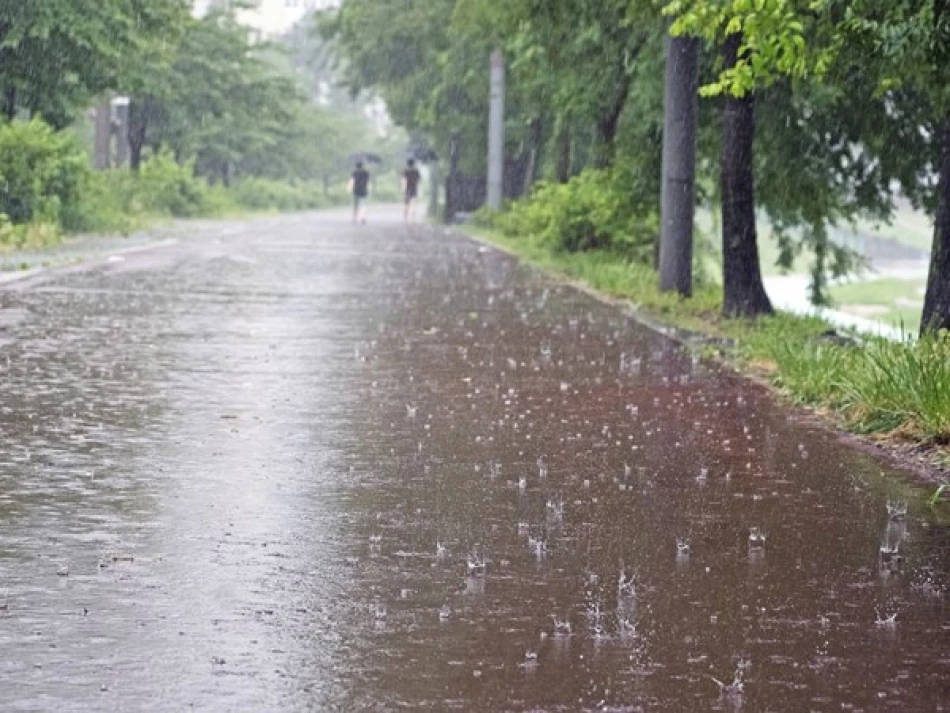
Heavy Rains Prompt Evacuations of Dozens in South Korea
South Korea Faces Deadly Flooding Crisis as Monsoon Season Intensifies
Heavy rainfall has claimed one life and forced the evacuation of over 100 people in South Korea, highlighting the country's ongoing vulnerability to extreme weather events during its monsoon season. The latest flooding underscores how climate change is amplifying traditional weather patterns across East Asia, creating more frequent and severe precipitation events that strain infrastructure and emergency response systems.
Immediate Impact and Emergency Response
South Korea's Ministry of Interior and Safety reported that torrential rains from Wednesday through Thursday morning dumped over 400 millimeters of water across several areas of South Chungcheong Province, located south of the capital Seoul. The deluge triggered widespread flooding and prompted authorities to issue the highest-level landslide warnings for multiple regions, including the affected Chungcheong area.
Emergency crews successfully rescued two individuals who had become trapped following a landslide in the province, according to Yonhap News Agency. The swift response demonstrates South Korea's well-developed disaster management protocols, refined through decades of dealing with seasonal flooding.
Regional Weather Patterns and Climate Context
This flooding event occurs during South Korea's changma season, the local term for the East Asian monsoon that typically brings heavy rainfall from June through August. However, meteorologists have noted that recent years have seen more intense and unpredictable precipitation patterns, consistent with global climate trends.
The 400-millimeter rainfall figure represents nearly half of Seoul's average annual precipitation falling in just over 24 hours, illustrating the extreme nature of this weather event. Such concentrated downpours overwhelm drainage systems and increase landslide risks in South Korea's mountainous terrain.
Infrastructure Vulnerabilities and Urban Planning Challenges
South Korea's rapid urbanization over the past decades has created new vulnerabilities to extreme weather. Dense development in flood-prone areas and the replacement of natural drainage with concrete surfaces have reduced the landscape's ability to absorb sudden water influxes.
The focus on South Chungcheong Province, a region that has experienced significant industrial and residential development, reflects broader challenges facing rapidly developing Asian economies. Balancing economic growth with climate resilience has become a critical policy challenge for the South Korean government.
Economic and Social Implications
Beyond immediate safety concerns, such flooding events carry substantial economic costs. South Korea's advanced manufacturing sector, including semiconductor and automotive industries, faces potential supply chain disruptions when extreme weather affects transportation networks and worker mobility.
The evacuation of over 100 people also highlights the social costs of climate adaptation, as communities must repeatedly relocate during emergency situations. This pattern may influence long-term urban planning decisions and infrastructure investment priorities across the country.
Looking Forward: Adaptation Strategies
South Korea's experience with this latest flooding will likely inform ongoing discussions about climate adaptation strategies. The country has been investing heavily in smart city technologies and flood management systems, but events like this test the limits of current infrastructure.
The successful rescue operations demonstrate the effectiveness of South Korea's emergency response capabilities, developed through experience with natural disasters including typhoons, floods, and landslides. However, the recurring nature of such events suggests that longer-term adaptation measures will be necessary to protect communities and economic assets from increasingly severe weather patterns.
Most Viewed News

 Layla Al Mansoori
Layla Al Mansoori






